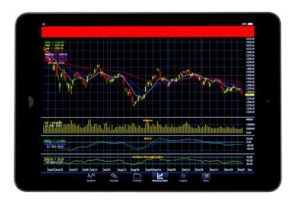What is Fintech – Details and Aspects to Consider
The financial industry has been using various technologies for a very long time to meet the needs of its clients. Fintech is one of the fastest-growing industries in the world because it is safer and more convenient than traditional forms of financial services.
The Business Research Company estimates that the fintech industry will grow to $158,014.3 million by 2023. According to this study, in the US alone, 60% of credit unions and 49% of banks believe that financial technology partnerships are essential in today’s marketplace.
The financial sector is one of the most open to digitalization. And this is not the desire of entrepreneurs, but rather an inevitability: if you do not innovate, you will definitely lose customers. In this article we explain what fintech is and why every financial company must be technologically advanced.

What Tasks Does Fintech Solve?
Fintech is an innovative development in the field of financial services that use advanced technologies such as biometrics or blockchain. Developments can be presented in the form of applications, software modules or entire business models. It is also customary to call fintech startups and companies that develop, sell and implement such innovations.
Fintech completely covers the user’s basic need: to transfer money quickly, cheaply and simply, take a loan, find an investor and get other financial services.
In addition, the development of financial technologies is aimed at:
- Maintaining competitiveness in financial markets;
- Optimization of the financial industry;
- Provision of quality and affordable services.
What Areas does Fintech Work in?
Internal fintech segments are diverse. Here are a few key areas in which financial technology is most often used.
Trading
It will be no surprise to say that the field of trading is rapidly developing and engulfs crypto, stocks, Forex. Fintech is a collection of modern tools and technologies that make the trading process easier for customers. Introducing new tools and robots is a way to facilitate the easier execution of trades. For example a lot of customers use a Forex accelerator indicator which is helpful for conducting more profitable operations. There are expert advisors as well, which monitor financial markets using different algorithms.
Of course, fintech is not limited to these options only when it comes to trading. More and more innovations are adopted daily. Brokers have a lion’s share in incorporating these changes on their platforms.
Payments and Transfers
This segment combines payment systems, contactless payment services and online transfers, e-wallets, which are systematically replacing traditional banking. Digital payment technologies open access to financial transactions for 1.7 billion people around the world who cannot use ordinary banking services.
Crowdfunding
Crowdfunding platforms allow entrepreneurs and investors to discuss projects without bureaucracy and bank fees, as well as attract funding from ordinary people. The service helps to raise the required amount for socially significant projects, for example, for the treatment of childhood diseases or assistance to the population of third world countries.
Security
Cybercrime is developing along with the fintech industry. The main security concerns are related to technological risks – data breaches and cyber attacks. In response to the problem, tech startups are creating solutions that protect both big players and ordinary users. This allows banks to save up to 30-40% on information security costs.
What is a Fintech App?
Fintech applications are web or mobile applications related to financial services. These days, such applications are widespread as most financial services are delivered digitally to improve their efficiency and speed of execution. Here are the characteristics of Fintech apps:
- Simplicity
- Pop-up notifications
- Personalization
- High-level security
Digital payments
Digital payments are fast and secure cashless payments. Fintech applications with online payment systems, e-wallets and digital currencies facilitate the process of making electronic payments.
Statista estimates that the value of global digital payments will reach $6,685,102 million by 2022.
Digital Banking
Banks develop fintech applications, because for clients, this is a very convenient way to manage their bank accounts, and for bank employees – the data of their clients.
Digital Lending
Digital lending apps are lending apps and lending software that facilitate communication and settlement between lenders and borrowers. Financial institutions such as banks or individual lenders use fintech applications to simplify and manage lending procedures.
Digital Investments
Digital investment fintech applications allow investors to research various financial assets and stock markets in order to successfully invest in them. These apps provide users with the latest news and important data to make informed decisions about their investment plans.
Customer Credit
Consumer lending apps help users manage their personal finances. With the help of the appropriate tools and functions of such applications, users can easily manage their expenses, plan budgets and spending.
Fintech is Future
Fintech applications are attractive because they can be used quickly and with minimal effort by users to solve the necessary problems. This could not be overlooked by giant companies such as Google, Apple, Amazon and Facebook. They also added financial services to the list of basic services such as: online wallets, sending money in a messenger, and so on.
Companies and financial institutions should take a closer look at these types of applications and quickly implement them in their work in order to gain benefit and customer recognition.







